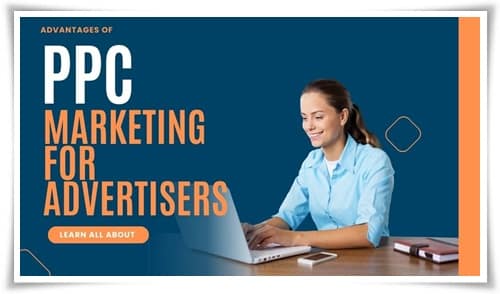
When digital marketing came out into the book of business marketing techniques, PPC shone out among others. Even though SEO is a top digital marketing strategy, PPC never left behind the other digital marketing styles. PPC marketing enables advertisers to pay publishers when their users click their ads. The advertisers will bid on the value of clicks according to these three elements, such as:
- Keywords
- Platforms
- Target audiences
The PPC agency provides PPC marketing or CPC (Cost-per-Click) commonly used by search engines, such as:
- Google Ads
- Social media platforms
Affiliate marketers and bloggers also use PPC, which runs display advertising on their sites.
PPC for SaaS
SaaS is also used for PPC marketing. It focuses on driving revenue growth for SaaS development services. SaaS companies are using PPC to generate leads quickly. Content marketing is also used for building relationships with their potential customers.
PPC advertising for SaaS is extremely effective for scaling MMR fast. MMR or Monthly Recurring Revenue represents the revenue expected continuously monthly. You know you have the right PPC strategy when you have a solid product-market fit. When it comes to PPC marketing, SaaS companies fall into offering two categories, namely:
- PPC campaigns to drive revenue
- PPC for SaaS generates MQLs and relies on SEO or outbound marketing
The challenges of these two categories help build a predictable and scalable PPC SaaS strategy that drives revenue growth.
SaaS PPC campaigns
PCC campaigns are used by SaaS companies to inherit past campaigns. There are three reasons you have seen why it happened, such as:
- Paid advertising is a reliable driver of revenue short term
- Quicker return on investment
- Content marketing
Many SaaS companies are pulling the trigger too fast to change the PPC campaigns before reviewing and measuring performance. They establish no initial expectations or baseline indicators for the campaign performance. They make quick changes because of high CPC or low amount of impressions.
It is the stage where the budget gets reduced, moves to other channels, and is written off as a loss. There are clear expectations from the get-go and the baseline for the campaign performance.
Optimizing for bottom-of-the-funnel keywords
When you have just started running paid ads and have no historical data, start by optimizing for the bottom-of-the-funnel keywords. Google Ads and some other advertising platforms require time to collect data for the campaigns. It helps learn more about the audience and which is valuable to click. When optimizing for trial signups or demos out of the gate, your ads will be shown to plenty of non-potential quality prospects.
You will be paying for higher cost per click because you are focusing on driving conversions.
Start new campaign
Upon starting a new campaign, you need to focus on optimizing engagement and not conversions. Engagement means conversion, in the sense that you are letting them know that your business exists and they find it interesting. There is a greater chance of building engagement and this will serve as a tool for conversion.
Optimizing engagement will be focused on the following:
- Gaining views on your funnel content
- High-funnel micro conversions
It gives Google Ads time to determine quality clicks based on the actions of the users after they have visited your website and taken to the landing page of your ads.
Conclusion Many businesses are equipped with strong PPC campaigns to improve their digital marketing strategy. Setting up PPC for SaaS properly makes it perform well and optimized over time leading to high multiples on return on return on the advertisement spend. SaaS businesses move fast when it comes to Pay-Per-Click and this is fine. However, it is important to understand which one to prioritize and take actions to achieve success.
Leave a Reply
You must be logged in to post a comment.